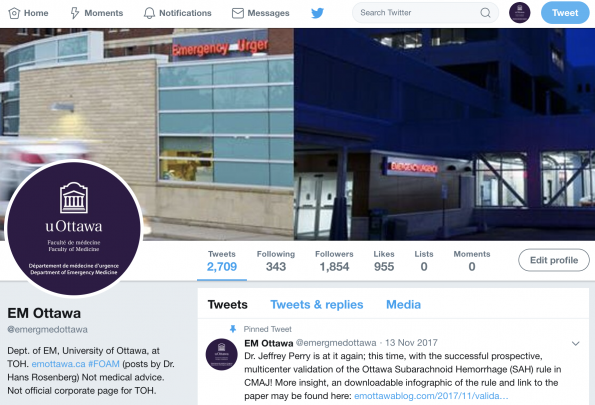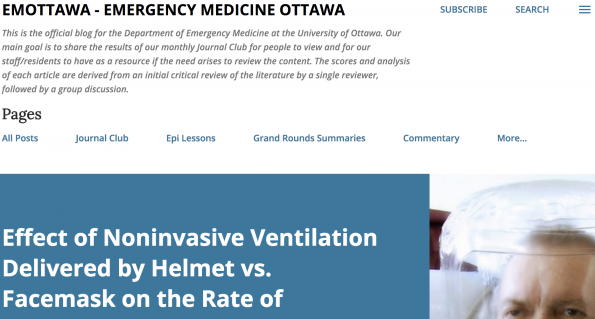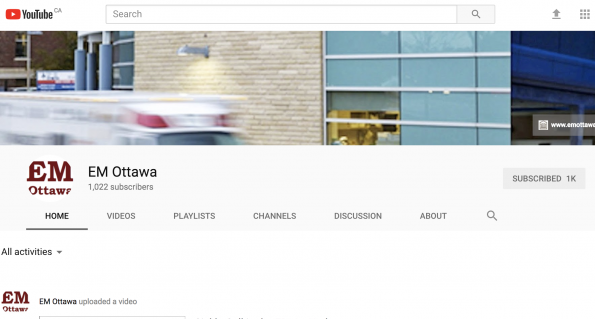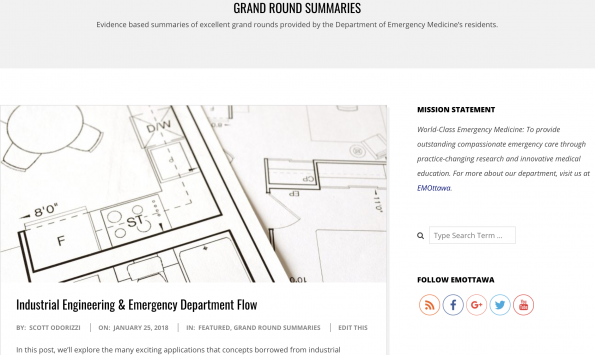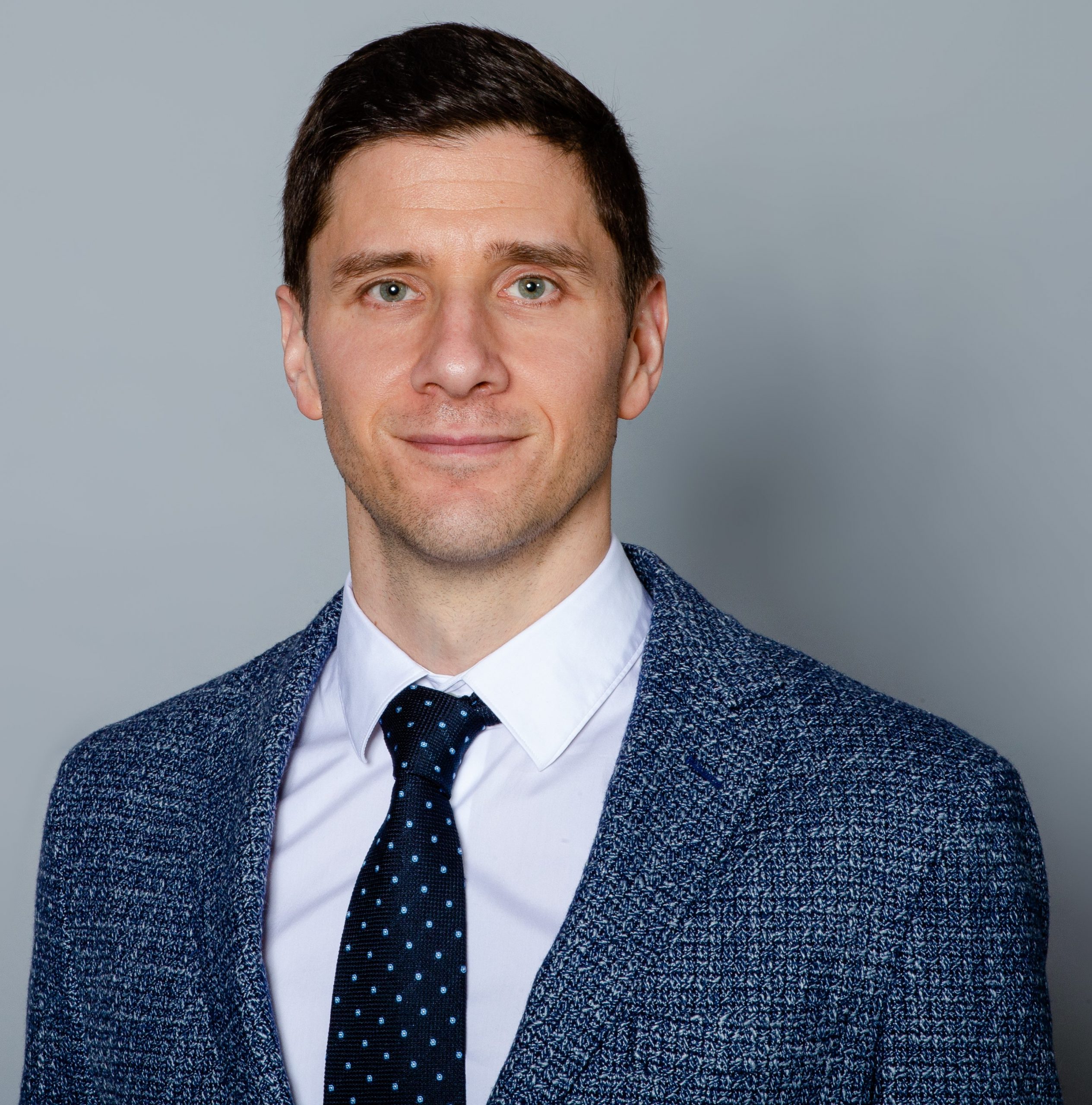I wanted to share with you a brief history on how our Department of Emergency Medicine (DEM) at the University of Ottawa developed and evolved from what we called our Web 2.0 program to our current official Digital Scholarship and Knowledge Dissemination program. As far as I know, it’s one of the first in Canada, which has a stipend faculty position, equipment funding, a role description and is now ingrained in the structure of our academic department.
Digital platforms and social media are ubiquitous in the world of Emergency Medicine (EM). As a specialty, EM has grasped on to the Web 2.0 technologies. This relatively novel means of education and communication is used to share and exchange ideas, and truly try to advance the specialty. If you are reading this blog post you are well aware of the FOAMed (Free Open Access Medical Education) movement. Officially defined since about 2012, many EM practitioners were already doing this, it just didn’t have a label.
How we started
After the idea was proposed at a faculty retreat, we started a “Web 2.0” initiative for our DEM. Initial platforms used were Facebook, Twitter and Blogger to keep track of our Journal Club and Epi Lessons (using our old Blogger platform, more on that later).
This program required objectives which would be the focus of how we did things. Consequently, the following were developed:
- Update our staff (physicians and allied health), residents, and medical students on events related to the DEM.
- Discuss Emergency Medicine topics that are new, important or controversial.
- Provide reviews and suggestions for apps/podcasts/websites that one can use as resources in Emergency Medicine.
- Encourage the role of technology and web 2.0 in Emergency Medicine practice and education.
This was a slow and steady process. We had a bit of engagement from our department, as well as from the EM community and our fair share of bots who followed us.
However, during this early process, one of the giants in EM medicine and highly influential in our DEM became a strong supporter (Dr. Ian Stiell @EMO_Daddy). In order to meet our Mission, we had to get the word out. As many people familiar with change theory know that having an Influential Leader within a department be a supportive backer can make all the difference in the world.
How we progressed
After minor success (at least not a failure), we decided to add a few components to our Web 2.0 strategy.
First, we put our Grand Rounds on a web platform available remotely. As a result, our DEM members have uninterrupted access to rounds, regardless of location. Furthermore, this gave us a recording that we could use and post on YouTube, our next platform. We uploaded and promoted the top 5-10 for each academic year. In addition, any content that was produced within the DEM was added to our channel (eg. Pig-Tail Catheter Insertion).
In addition, this stage also included having a relatively regular content schedule on all our platforms. Mondays for Journal Club/Epi Lesson, Tuesdays for Articles Published, Wednesdays for Grand Rounds announcements, Thursdays for Grand Rounds Summaries, and Fridays for any other content. Importantly, this was another key step in our process, having a regular schedule allowed our audience know what was coming, expect content and (perhaps) look forward to what they would see next.
Becoming the Digital Scholarship and Knowledge Dissemination Program
Finally, we were entrenched in the culture of our department, making some slow but consistent gains in popularity outside of our DEM. However, we had two holes in our strategy.
First of all, all of what had been done up to that point was essentially a one-man show. This resulted in a few obvious problems: lack of input from varied sources, limited to the amount of work that one person could do, and finally if I happened to drop dead it would all fall apart. So, in the fall of 2016, I made a proposal to our Academic Executive committee to create a new program in the DEM, called (by the very un-catchy title) Digital Scholarship and Knowledge Dissemination program (DS & KD). It would have a position of Director, with a clear role description and deliverables. There would be funding (stipend/equipment), deliverables and a clear plan for future directions.
Role Description – Director Digital Scholarship and Knowledge Dissemination
The second issue, was we were limited by our blogger platform. It had worked fine as a starting point, but now we wanted a more professional and more robust platform. This led to our move to WordPress and the addition of Dr. Shahbaz Syed to the team as our blog expert. After innumerable hours the migration was completed and we now have a more attractive, easier to navigate and populate our blog.
Future Directions
Our current DS & KD program is thriving with our blog, Twitter, Facebook, YouTube and other online platforms. However, we must plan for the future and ensure we are evolving and becoming an even better program. Some of our future plans include:
- Addition of an Assistant Director position
- Working with our thriving Medical Education program to evaluate how people are learning from our platforms, what works, what doesn’t, and what’s the impact on clinical work (the ultimate goal)
- Integrating the work that our other programs do, such as our Ultrasound Program or our Wellness Team. We have other thriving programs like EMS, Quality Improvement, SIM, etc.
In Conclusion
As a result of this process, some of the key points I learned were:
- Have a vision and a passion for what you are trying to develop
- Find that influential change leader to help you on your way
- Provide regular and ideally high-level content
- Organize your program so that it could function without you
Hope you found this summary of the process we went through at EMOttawa helpful. Hope to see other Digital Scholarship and Knowledge Dissemination programs in other departments!


